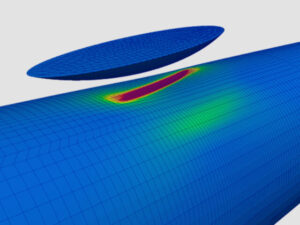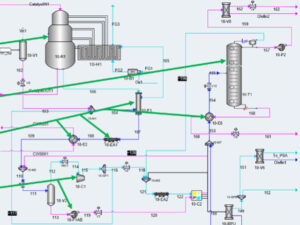Safely Purging Vessels and Equipment
This webinar will discuss procedures and situations encountered when purging gaseous content from equipment with an inert substance. When activities inside equipment require it to be opened and/or closed, both scenarios expose the process substance to air that can lead to potentially dangerous combustible mixtures, and when toxic substances are present, it is also extremely important to safely purge out equipment to concentrations below accepted threshold values. Different methods for purging can be used depending on the vessel’s geometry, the vessel’s working pressure, and the purging media and gas relief systems available, so that operations can be performed safely. Time and cost can also play a very important role when selecting the procedure.
An Overview of the Proposed Updates to the 2020 Edition of API 579-1/ASME FFS-1, Fitness-For-Service
This webinar summarizes the updates to the 2020 Edition of API 579-1/ASME FFS-1, Fitness-For-Service (API 579), as well as ongoing development work relating to new technology.
Using Fitness-For-Service Methods in API 579-1/ASME FFS-1 to Evaluate Damaged Components in the Creep Regime
This webinar summarizes the Levels 1, 2, and 3 FFS assessment procedures for estimating creep damage and remaining life in accordance with API 579.
Mitigating Piping Vibration Risk: Case Studies on Level 1, Level 2, and Level 3
Hear a discussion and comparison of the future API 579 Part 15 method to current industry approaches (ASME OM-3) and several case studies to help you identify, evaluate, and mitigate piping vibration.
Nozzle Stress Analysis
This webinar discusses many of the simplified methods that have been proposed for determining the elastic stresses at nozzle-to-shell junctions due to internal pressure and external piping loads.
Earthquake Engineering – Demands, Damage, and Design
This webinar discusses the fundamentals of earthquake engineering, including modern analysis and design methodologies, damage assessment and repair, and retrofit of existing sub-standard seismic force resisting systems. These best practices are focused on mitigating risk for buildings and other structures subject to seismic events.
API RBI in PCMS
Improve inspection workflows and manage your infrastructure’s full lifecycle with the integration of PCMS® and API RBI software.
Structural Solutions – Case Studies in E2G’s Balanced Approach
This webinar uses a variety of case studies to detail several projects where E²G's structural engineering expertise provided key insight into analysis, design, retrofit, and repair efforts.




